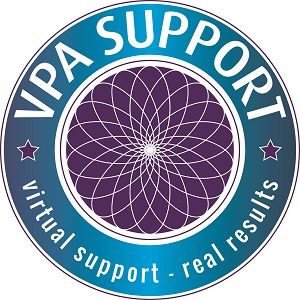Effective time management has never been more important if you want to make the most out of your working hours. If you’re struggling to balance work, personal life, and everything in between, you might want to try the 3-3-3 method. This simple yet powerful technique can help you take control of your time and increase productivity without feeling overwhelmed.
What is the 3-3-3 Method?
The 3-3-3 method is a time management strategy that divides your day into three main sections, each containing three key tasks or activities. By focusing on three things at a time, the method keeps your day structured, achievable, and stress-free. The goal is to prioritise and execute tasks in a way that helps you stay on track while preventing burnout.
In short, the 3-3-3 method suggests that you:
- Focus on 3 top-priority tasks each day.
- Break down your day into three blocks of time.
- Allocate three activities to each block.
This method works by creating an easily digestible framework for time management. Instead of feeling overwhelmed by an endless to-do list, you simplify your goals into manageable chunks.
Step 1: Identify Your Top 3 Priorities
The first step in using the 3-3-3 method is to identify your top three priorities for the day. These should be the tasks that are most important, time-sensitive, or impactful. They may relate to work, personal goals, or even self-care. The key here is to avoid overloading yourself—three is the magic number.
Start by listing out everything you need to do, then pick the three tasks that will move you forward the most. These tasks should feel significant and contribute to your long-term objectives. For example:
- Work Task: Complete an urgent project or respond to important emails.
- Personal Task: Exercise for 30 minutes or prepare a healthy meal.
- Self-care Task: Take 10 minutes for meditation or reflection.
Choosing these three priorities at the start of the day allows you to remain focused and ensures you’re tackling what’s most important. This also prevents you from feeling scattered or distracted by less important tasks.
Step 2: Break Your Day into Three Time Blocks
Once you’ve identified your top three priorities, the next step is to break your day into three distinct time blocks. Each block will be dedicated to specific tasks, helping you stay on schedule and focused. The time blocks can vary depending on your preferences, but a common structure might look like this:
- Morning Block (e.g., 9:00 AM – 12:00 PM): Focus on your most challenging or creative task.
- Midday Block (e.g., 12:30 PM – 3:30 PM): Handle meetings, calls, or less mentally taxing tasks.
- Evening Block (e.g., 4:00 PM – 7:00 PM): Wrap up the day with lighter tasks, personal goals, or self-care activities.
By scheduling your day into blocks, you can maintain a sense of structure and avoid spreading yourself too thin. Within each time block, you’ll aim to accomplish a set of three specific activities related to the tasks at hand. For example, during your morning block, you might decide to:
- Finish a report
- Respond to important emails
- Set the agenda for the afternoon’s meeting
In the midday block, you might focus on:
- Attending a meeting
- Making necessary calls
- Completing a smaller task like organising your files
The evening block can be dedicated to personal tasks like:
- Spending time with family
- Doing some light stretching or yoga
- Reflecting on the day’s progress
Breaking the day into three manageable time blocks allows you to stay on track while making the most of your energy levels. You’ll avoid the temptation to multitask and create a sense of accomplishment as you complete tasks in each block.
Step 3: Tackle 3 Activities Per Block
Now that you’ve structured your day into three blocks, the next step is to ensure each block has three activities. This step is crucial because it forces you to narrow your focus and concentrate on the essential actions that will move you forward.
Within each block, select three activities that align with the overall task for that time period. This can involve a combination of professional, personal, and self-care goals. The key is to limit distractions by focusing on only three things at a time. This reduces decision fatigue and helps you make better use of your time.
For example, if your morning block is focused on work, the three activities might be:
- Write 500 words of a report.
- Answer five priority emails.
- Review your calendar for the rest of the week.
In your afternoon block, if you’re working on meetings and communications, your three activities could include:
- Conduct a team meeting.
- Return client calls.
- Organise your to-do list for the following day.
In the evening, focus on personal well-being:
- Prepare a healthy dinner.
- Spend 30 minutes reading or exercising.
- Do a 10-minute meditation session.
By keeping the activities simple and realistic, you’ll avoid feeling overwhelmed. Three tasks per block create a sense of progress, helping you feel accomplished even on busy days.
The Benefits of the 3-3-3 Method
The 3-3-3 method offers numerous benefits, especially for those who struggle with time management. Here are some of the key advantages:
- Reduced Overwhelm: By focusing on only three tasks at a time, you’ll feel less stressed and more in control of your day.
- Increased Focus: With three activities per block, you’ll give your full attention to each task without distractions.
- Improved Productivity: The method encourages you to focus on high-priority tasks that matter most, leading to better outcomes.
- Better Work-Life Balance: The 3-3-3 method allows you to balance work, personal goals, and self-care, ensuring that you don’t neglect any area of your life.
Conclusion
The 3-3-3 method of time management is a simple yet powerful technique that can help you regain control of your day. By focusing on your top three priorities, breaking your day into three time blocks, and tackling three activities per block, you’ll stay organised and productive. With this approach, you can reduce overwhelm, boost focus, and create a better working balance. So, the next time you’re feeling swamped with tasks, give the 3-3-3 method a try—it might just be the solution you’ve been looking for.
Connect With Me:
If you are a coach or a consultant and need executive support help to uplevel your business administration and support, reach out and let’s start a discussion about how we may partner in business and get your schedule and background processes humming.
Book a free chat with me, here.

